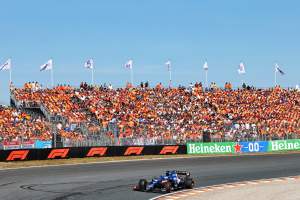Up Next

The circuit designers who thought to make Hugenholtz corner banked for F1’s return to Zandvoort after 36 years inadvertently did Max Verstappen and his army of fans a massive favour.
It ensured they all had a day that was pretty much unimprovable.
There were a couple of moments where Verstappen’s victory might have got away from him – probably the biggest wobble being his less than perfect lap which only just secured him pole in a car in which he otherwise had around three tenths advantage. The overwhelming part of that advantage came from the exit of Turn 2 to the banked entry of Turn 3, which is effectively all one sequence.
For whatever reason, the Mercedes just refused to work through there. It never got any closer than 0.18s through just that short sequence, and began the weekend even further off than that. There was just no getting around that hard fact. It wasn’t just the Red Bull the Merc was struggling against there, it was several other ostensibly slower cars too. The Alpines for example were taking almost as much time from the Mercs there as the Red Bull.
The team couldn’t nail down why: it was a corner they had prepared extensively for in simulation, just like everyone else. One theory is that the wheelbase is just too long. Certainly, it was bottoming out its front wing through there. The dynamics of entering a banked corner mid direction change are complex and something about the Mercedes just didn’t resolve those demands very well.
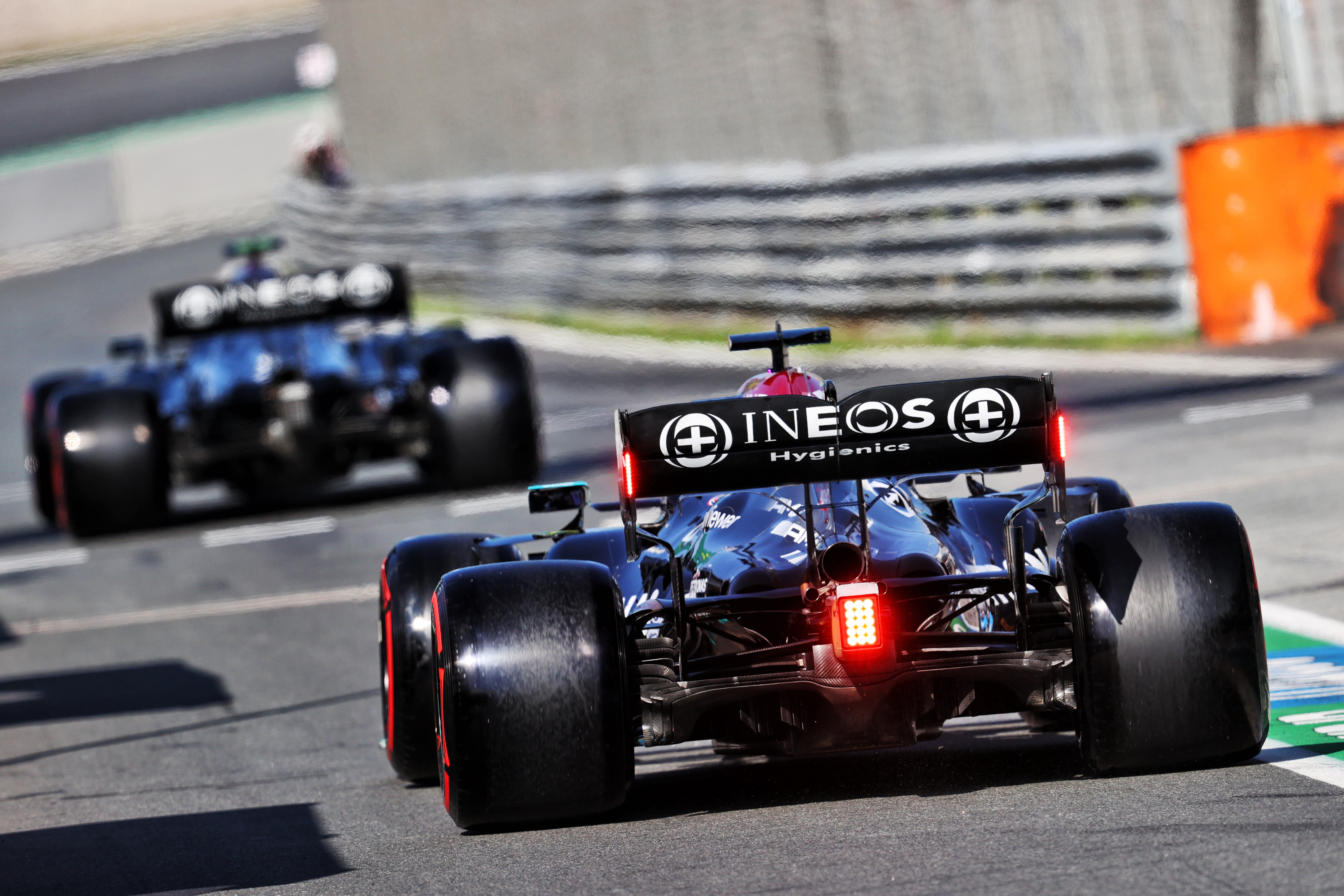
So Verstappen never looked like not taking pole – until the final moments of Q3 when all of a sudden it became a little marginal! He’d got a bit of wheelspin over the kerbs on the exit of 3 and had double upshifted in response, this pulling a greater demand from the battery, leading to a small derate later. The DRS mechanism then failed to function at the end of the lap which later analysis suggested cost 0.183s. In combination, he lost around 0.3s from his ideal lap – but even that was enough to secure pole, by the margin of a few hundredths.
The other way he may have lost the race would have been if he’d not got himself far enough out of Hamilton’s reach at the end of the opening lap – because the Red Bull was significantly slower than the Mercedes at the end of the pit straight, even without the Merc’s benefit of a tow.
The Red Bull was faster over a lap, no question, but that would mean little if Hamilton could slipstream past it just before its best bits, where passing would be impossible. It was a Silverstone-like situation but this time there was absolutely no ambiguity. Verstappen took off like a scalded cat, didn’t even need to defend into Tarzan, immediately pulled out another great chunk as they went through the Merc’s bogey T2-3 sequence – and that gap just grew at every corner.
It was an amazing spectacle, especially with the crowd roaring its approval. He burst through the orange smoke onto the pit straight from that crazy 18-deg banking already over 1.5s clear. Hamilton would be nowhere near close enough by the end of the straight to try a move.
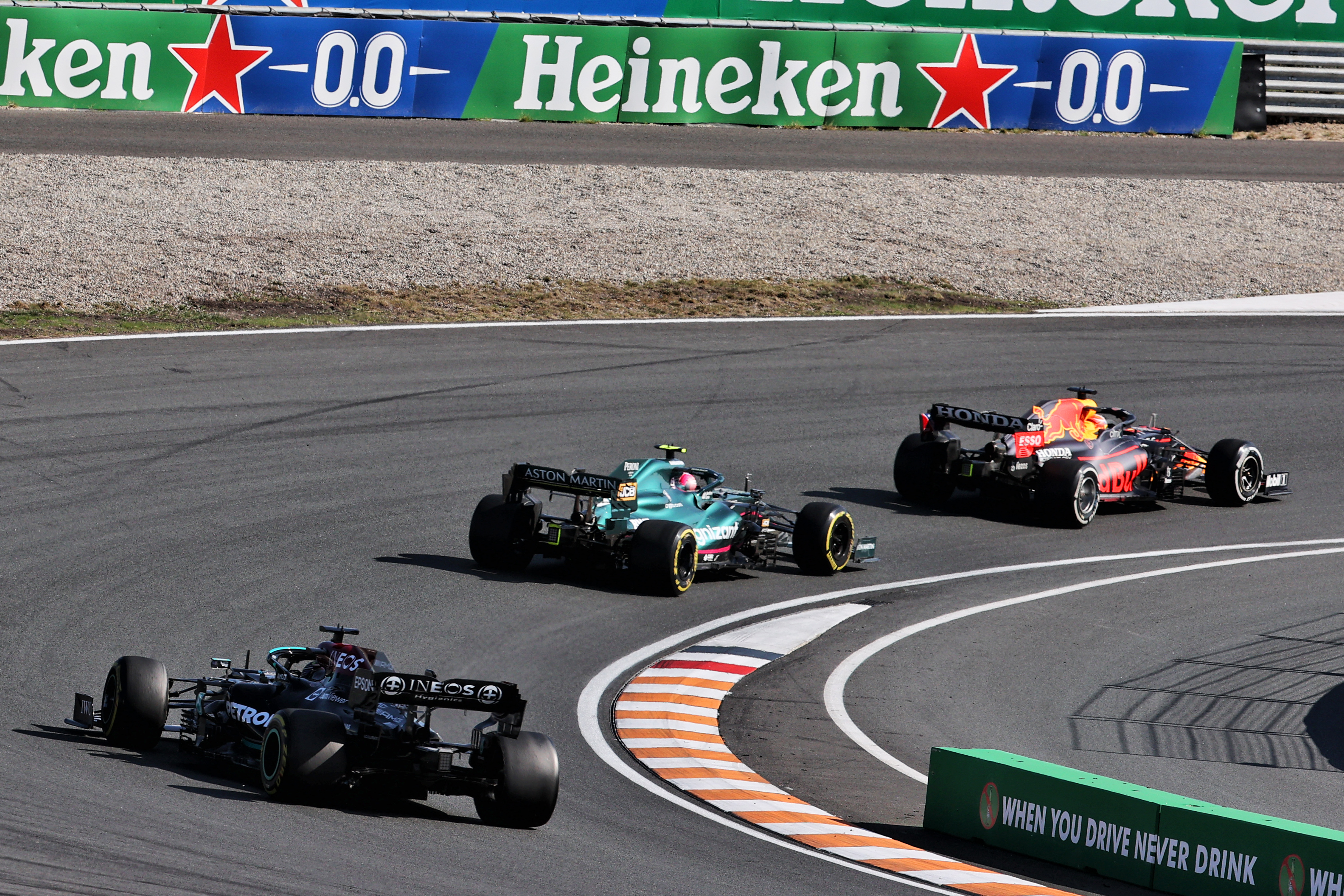
Then Verstappen needed just to open out the undercut gap – accomplished by the end of the second lap – and settle into a comfortable two-stop sort of pace. The interrupted practices on a new circuit meant no-one was certain about the tyre behaviour, but running at the front two-stop looked faster in the simulations and from Red Bull’s perspective there was no point in not committing to it because even if they’d tried to one-stop Verstappen, Mercedes would have challenged them with a Hamilton two-stop, thereby forcing them to respond. Better to control things from the front when there was no reason not to.
So Verstappen had the gap over Hamilton out to 3s by the eighth lap and they’d left the rest of the field far behind. Valtteri Bottas was running a deliberately more conservative one-stopping race in third and was already almost 7s adrift and he in turn was far clear from the second group, which was led almost throughout by Pierre Gasly’s AlphaTauri.
In fact, Gasly’s dominance of that group mirrored Verstappen’s of the lead, having qualified fourth at the head of it, retained the place, fending off then pulling away from the Ferrari pair and after his pit stop making a daring round-the-outside pass on Fernando Alonso’s yet-to-stop Alpine. That second group locked each other into one-stop strategies simply because the place loss would be so costly with a two-stop. With the field spread enjoyed by Verstappen and Hamilton, they could go for the more aggressive option.
Mercedes pulled the first stop plug with Hamilton on the 20th lap from 3.5s behind, exchanging his softs for a new set of mediums. It wasn’t really from close enough behind to be a realistic undercut attempt but it might just have worked had the stop been super-fast and had the Red Bull not got pace in hand.
But at 3.6s the stop wasn’t fast and at 1m 18.5s Verstappen’s in-lap was 0.5s faster than Hamilton’s had been (he was quicker in sector 2 on his old tyres than Hamilton on his new). A routine sub-3s stop from Red Bull – this with the new regulation protocol in place – got Verstappen out still comfortably ahead. But with the one-stopping Bottas now leading, 10s up the road.
Bottas represented the next threat to Verstappen’s day. A pretty obvious one. Playing the team game once more, Bottas was going to be left out there long enough to create possible opportunity as the fresh-tyred Verstappen/Hamilton dice closed him down. They demolished that 10s gap in eight laps. It was essential for Verstappen to pass Bottas immediately. He caught him at a potentially tricky moment, just unable to slipstream him into Tarzan to begin the 30th lap, meaning the Red Bull was stuck at old-tyred Bottas pace through the rest of the lap, enabling Hamilton to take great big chunks out of him – 0.4s in the first sector, 0.3s in the middle one, so that as the three of them dived into the downhill approach of the Turn 11-12 chicane, Hamilton was only around 1s behind, almost in pouncing distance.
But then, the worn outside front of Bottas’ tyre locked, giving him a scrappy run through the chicane and a slow exit, allowing Max to gain fast up the short straight of 13, so that as he rounded the final banked corner he had so much more momentum than Bottas he’d have passed even without the aid of DRS. The crowd’s roars of approval almost took the grandstand roof off as Verstappen blasted back into the lead. “We were concerned that Valtteri would back him up and then Lewis could get the undercut on both of them,” explained Christian Horner. “So that was why it was crucial to get past really quick.”

Had Red Bull brought Verstappen in for his second stop rather than try to pass Bottas, to thwart any Hamilton undercut attempt, it would have meant a very long final stint for Max and a more ideal tyre strategy for Lewis, which would have given him a big grip advantage in the late stages. Verstappen’s almost instant pass of Bottas saved the team from any agonising decisions.
Now Verstappen’s race was a whole lot easier for Red Bull to control. Mercedes had played its split strategy joker and it hadn’t worked. Bottas was finally brought in the next lap. Verstappen and Hamilton stayed out, with Verstappen reluctant to pull away too hard, knowing he’d need the tyres to respond to Hamilton’s in-lap whenever that might be. Mercedes believed in this phase that it might be in with a chance, as Hamilton kept the gap at 1.6/1.7s for several laps.
It was lap 37 when Verstappen was told, “Give it everything you’ve got, Max,” as Red Bull sought to pull him out of undercut range. He instantly sliced 0.7s off his times…. Hamilton had nothing in response. “They were playing with us,” said Hamilton later. “They were so fast.”
Two laps of that and the gap was up to 2.8s and ballooning further, so Hamilton was brought in – on lap 39. Maybe in hindsight too early, but that sudden Verstappen pace had spooked them. A used set of mediums was fitted rather than the alternative new set of hards – as out-lap performance was going to be crucial. Verstappen’s responding in-lap was a couple of tenths quicker, the Red Bull stop was four tenths quicker – and Verstappen emerged 3s in the lead on a set of fresh hards.
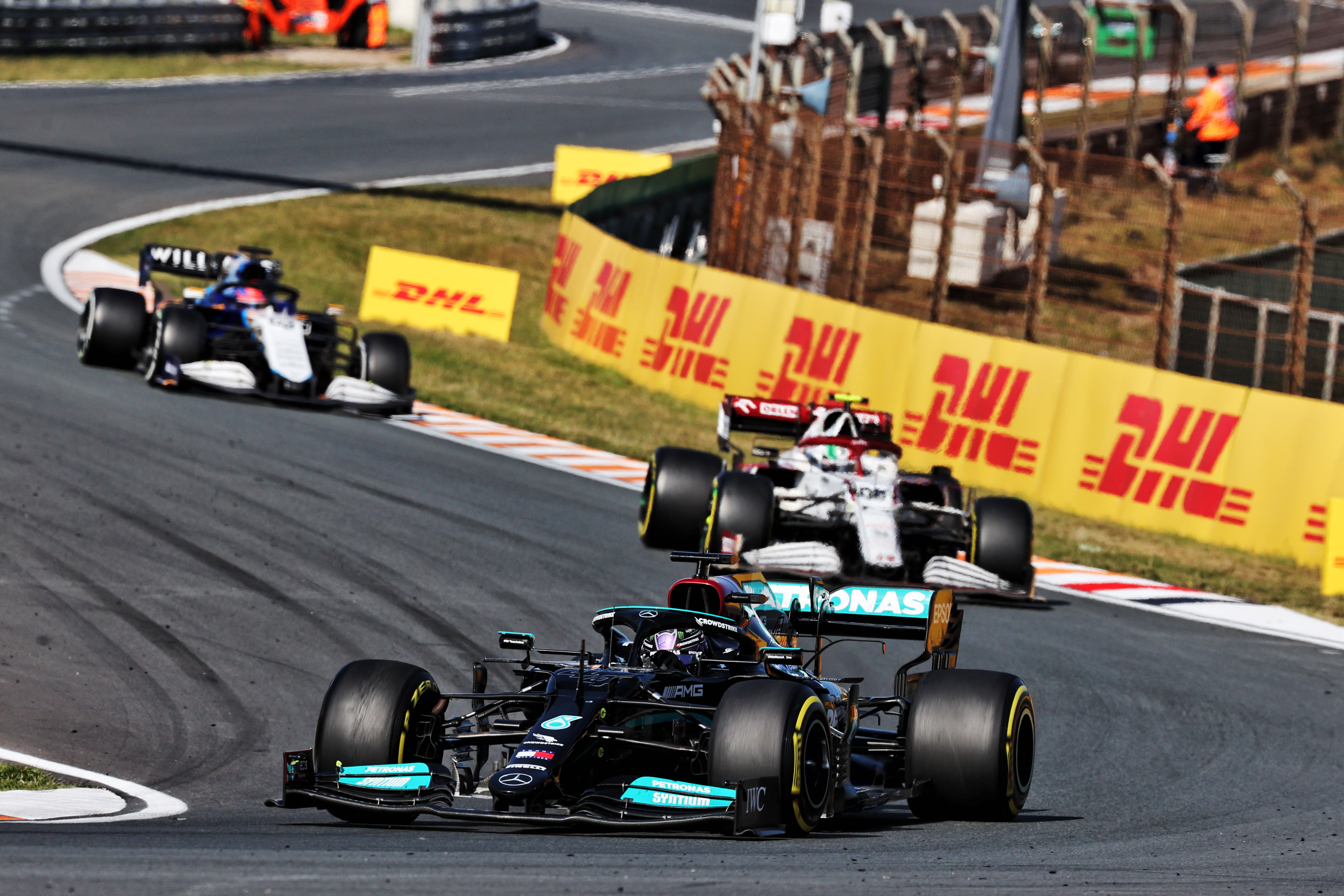
It was going to be difficult for Verstappen to lose from there even if Hamilton’s mediums would for sure be quicker than Verstappen’s hards for a few laps. Mercedes was hoping the performance gap between the tyres might be bigger than it was. Hamilton set to closing the gap down again, but certain he was taking too much from the tyres to retain a grip advantage by the time he arrived on the Red Bull’s tail. His initial flying lap was by far the fastest of the race so far, at 1m 13s, compared to Verstappen’s first flyer on the hards at 1m 13.5s. They went at it like this for the next 20 laps after which Hamilton had the gap down to 2.9s. But it was a doomed challenge.
On the 59th lap, Hamilton caught Giovinazzi and Latifi at an awkward point of the circuit, losing him 0.8s right there but, more crucially, allowing his worn tyres to lose temperature, after which it becomes almost impossible to bring them back up to their optimum. With Red Bull guiding Verstappen’s race according to their monitoring of Hamilton’s, Max was instructed to let rip once again – and he immediately trimmed 0.5s off his times.
At just that moment Hamilton had slowed by about the same amount. Game over. Just another dozen laps or so for Max and the crowd to enjoy, as his lead increased each lap. It had been a truly pummelling performance and the perfect outcome for the fans who had literally wished this whole event into life because of Max.
There was plenty to still be sorted out behind. The plan for Hamilton was to pit a couple of laps from the end, put on a set of softs and at least take the point for fastest lap. But before that, there was a concern about Bottas’ tyres. They’d been on for 36 laps, there was a vibration building and there was a massive gap behind him – so he was brought in first and fitted with a set of softs.
He assumed it was to try for fastest lap and he set about doing it – but was called off in no uncertain terms before he’d completed it. He backed off by 0.7s through the final sector but still set the fastest lap of the race so far at 1m 12.5s. Meaning Hamilton had a higher bar to beat. His last lap took it on a 1m 11.0s.
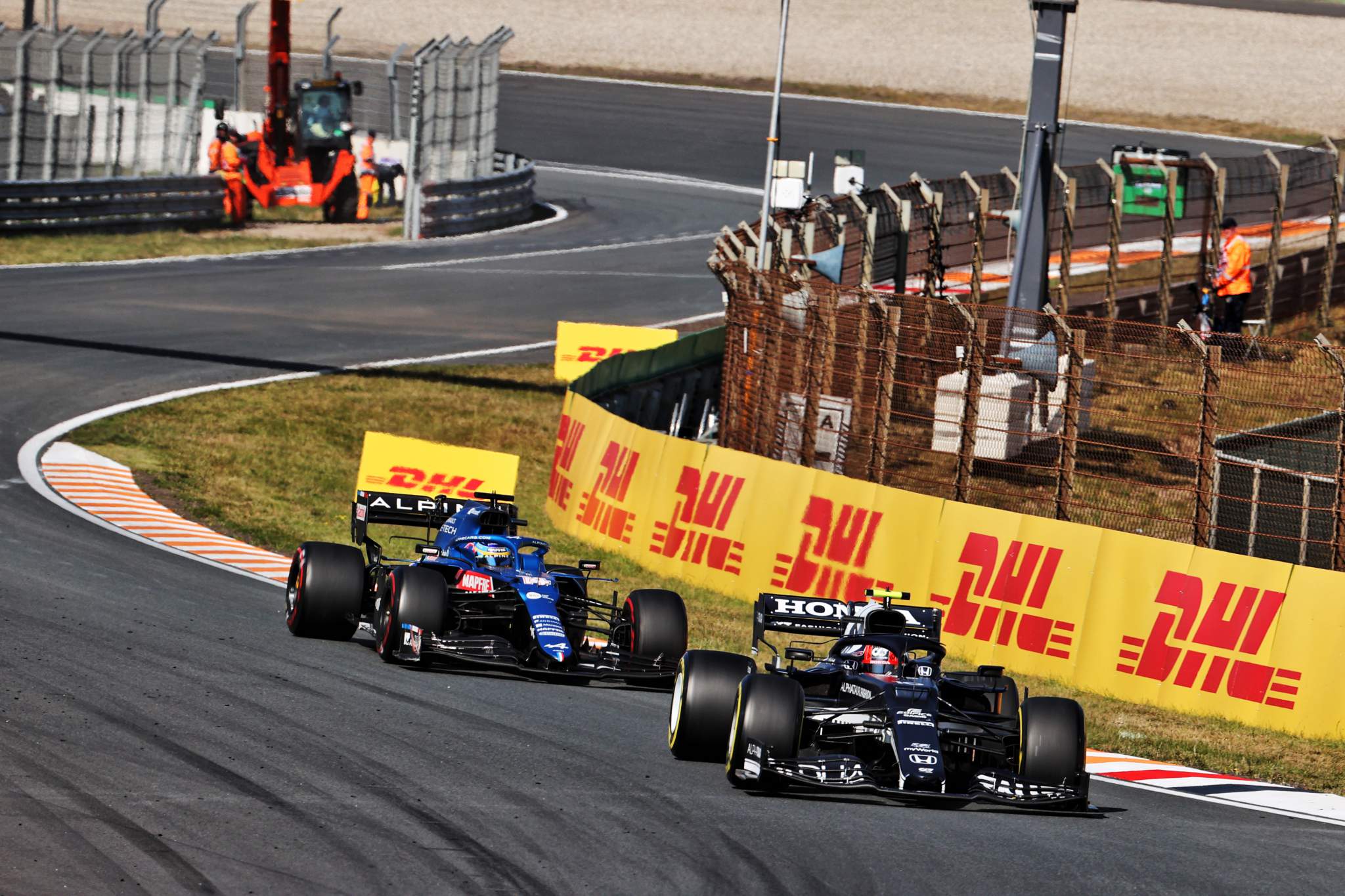
A lap down, Gasly’s fourth place was never seriously threatened and although Charles Leclerc kept the AlphaTauri vaguely in touch, the Ferrari was definitely only the second-fastest Italian car this weekend. Carlos Sainz struggled with pace and tyre usage and lost his sixth place to an Alonso ambush on the last lap.
This had been an eventful race for Fernando, getting very physical with team-mate Esteban Ocon on the opening lap and putting a beautiful move around two cars with his patented high line around the outside of the turn 3 banking. There was a bit more argy-bargy a couple of corners later as Alonso had a bit of a moment which caused Giovinazzi to make slight contact, losing the Alfa a further couple of places.
Ultimately Ocon was passed for eighth late in the race by the recovering Sergio Perez who started his Red Bull from the pitlane with a new Honda power unit, flat-spotted his initial hard tyres, forcing a lap eight stop and only really started his race from there. Predictably as a shark among minnows, he came through the field, mainly with nice moves around the outside at Tarzan.
Lando Norris took the final point, having been eased past team-mate Daniel Ricciardo from the pitwall. Sebastian Vettel spun the Aston at Turn 3 trying to pass Robert Kubica’s Alfa, almost taking out Bottas along the way. Kubica finished a place behind his puncture-compromised team-mate Giovinazzi on his zero-notice stand-in and lapped within 0.3s of him.
George Russell held off Lance Stroll for most of the race before retiring with a gearbox issue. Nichols Latifi in the other Williams was passed by Kubica and finished ahead only of the Haas.
Mick Schumacher had further niggle with team-mate Nikita Mazepin in the race before the latter retired. Their wheels came mighty close to interlocking at very high speed down the pit straight.
But thankfully there was nothing really to detract from the Dutch fairytale. A perfect day. Even Hamilton didn’t seem too upset. Verstappen retook the lead of the championship with this sweet victory. It won’t always be like this but it was just the orange icing on the cake of an incredible sporting day.
The techno beat finally stopped and the crowd dispersed happy, satiated.








